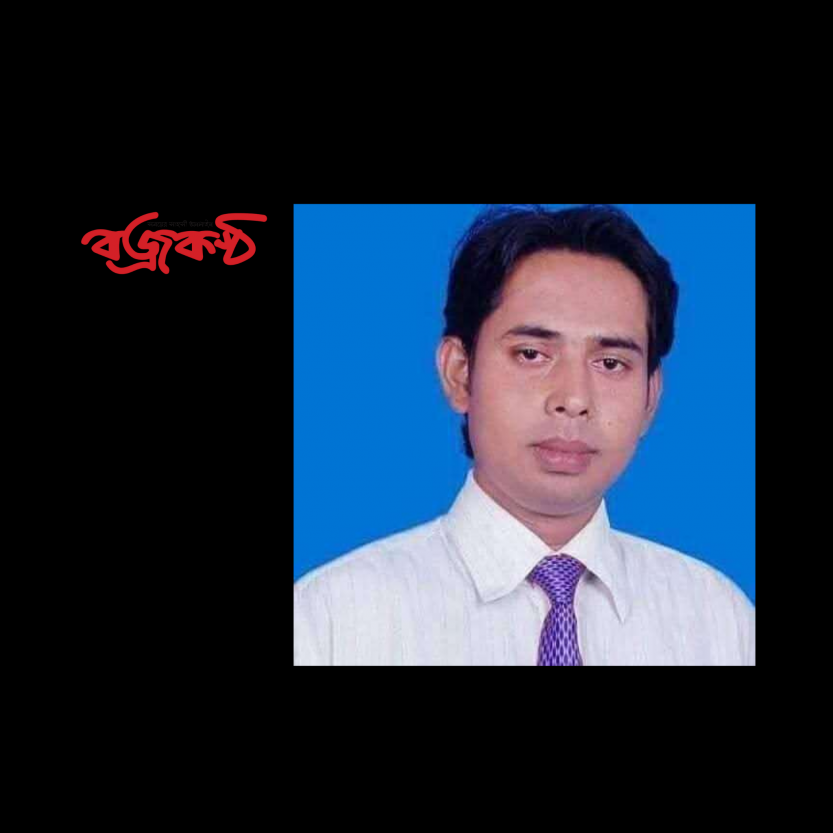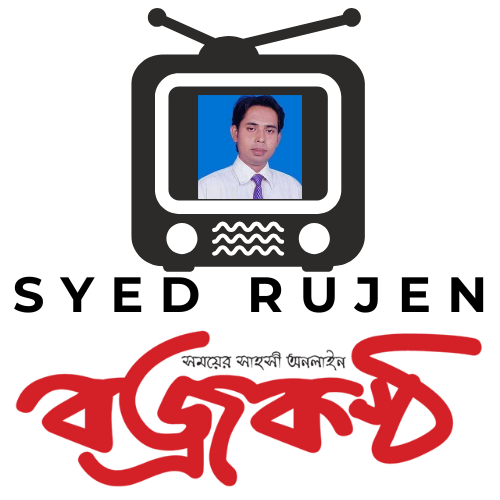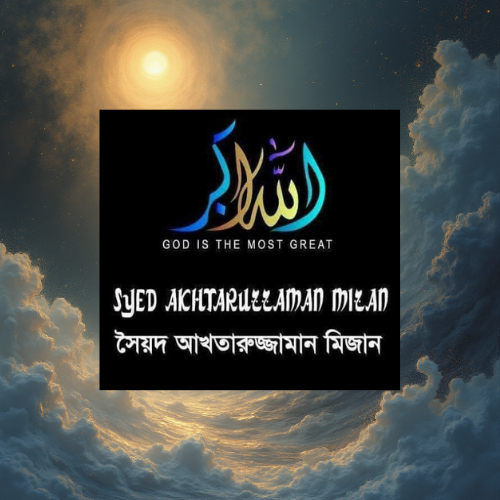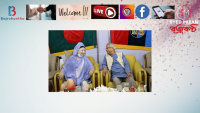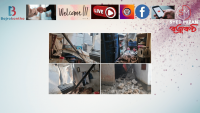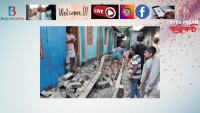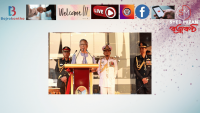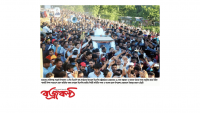

শুক্রবার ● ২১ নভেম্বর ২০২৫
প্রথম পাতা » English » The “Bangladesh Centre” in London
The “Bangladesh Centre” in London
Bojrokontho ::

In early 1975 the Scientology based charity Narconon were looking to lease the building as a hostel for the rehabilitation of drug addicts but planning permission for the change of use was refused.
The house now lay empty for several months but the next stage of its journey awaited. It came from Toc H ‘on the Hill’ and would essentially be due to the work of one man, Peter East.
Peter joined Toc H in Skegness as a young man. Later he joined the staff and went to work in the BAOR club in Paderborn, Germany. Whilst he was there he read about the race riots in Notting Hill and in 1967 when he finally returned to the UK to become the Warden of Talbot House at 42 Trinity Square, he was committed to improving race relations. Initially he taught English to young Asians at Toynbee Hall. These were mostly Bengalis from the Sylhet region. Then he set up an Asian Youth Club in the hut at back of Talbot House (it later moved to the crypt of St Botolph’s church, Aldgate). He organised camps to the Christian community Othona, out at Bradwell and in 1973 established a hostel for young Bangladeshis at No. 7 The Crescent (Directly behind 42 Trinity Square). If you want to know more about Peter’s work then track down a copy of Ken Prideaux-Brune’s A Kind Of Love Affair.
When Peter discovered that the old Mark I was standing empty, and knowing of its existing association with Bangladesh, he felt it might make an excellent Bangladeshi community centre. Thus in the annual report 1975/6 presented at the Central Council meeting in November 1976 it announced that in the coming year,
“the empty Notting Hill Mark is to be refurbished and eventually opened as a hostel for young Bengalis working in London. This scheme, which has the blessing of the Central Executive, is an extension of the work which has been carried out so successfully on Tower Hill for some time now. The house will remain the property of Toc H who will be represented on the management committee of this experimental venture.”
And so it became precisely that. The centre was largely run by a marvellous lady called Muni Rahman, whose husband, Shah, worked closely with Peter in the East End. There were a lot of Bangladeshi cultural events and dance classes. On one occasion the young Toc H group from Southampton came and taught them some English folk dances.
Essentially a project of the new Inner London District (formed July 1975), members were to work alongside future residents getting the building decorated with Toc H providing a loan for repairs. A number of prominent Bangladeshi community members agreed to serve on the Management Committee.
And it stayed like this for the next six years – a joint Toc H and Bangladeshi Community project until in June 1982 the lease was due to expire. At Central Council it was extended for a year after which Toc H agreed to sell the Mark to Bangladesh Community without putting it on the open market.
Ken Prideaux-Brune recalls:
“When Toc H took the decision to close its remaining Marks and sell the properties we agreed to offer Mark 1 to the Bangladesh community and the High Commission set about raising the money. There was an extraordinary meeting at the Centre, chaired by the High Commissioner and attended by a number of Bangladeshi businessmen. Everyone was expected to make public pledge of what they would contribute. After the High Commissioner had spoken and invited pledges there was dead silence for about 10 minutes. Eventually someone offered a sum. Then there was silence for several more minutes and then someone else offered. More Silence. Eventually after a very embarrassing hour or so a considerable sum had been pledged. I don’t know how much of it was actually paid. I suspect that at the end of the day the Bangladesh government had to put in a considerable sum. But the building was sold and a committee set up to run it. It then emerged that there was considerable resentment against Muni. The Centre had been very much run by Muni. She made all the decisions but she also did all the work. If the floor needed scrubbing Muni would be on the floor scrubbing. The men on the committee (and I think they were all men) talked a great deal about how the centre must be run democratically but they didn’t actually do anything. But Muni was forced out (and shortly afterwards was killed in a car accident).”
There was time needed to ensure a proper legal footing for the purchase. In fact there was a bit of a battle with the Royal Borough of Kensington and Chelsea over planning permissions and perceived change of use. Eventually in March 1985 there was a ceremony to formally hand over the Centre to the Bangladeshi Community in in the presence of the then High Commissioner Mr Fakhruddin Ahmed and led by Harry Brier Chairman of Toc H.
The High Commissioner said “it was from this house that diplomatic notes were first exchanged with HM Government upon the recognition of Bangladesh as an independent state
The General Secretary of the Bangladesh Centre said;
“The Bangladesh Community will remember this momentous evening with gratitude. Toc H is handing over the charge of the premises, located at 24 Pembridge Gardens, to the Bangladeshi community in London.
In 1971, during the Liberation war of Bangladesh, Toc H offered us accommodation in setting up our first High Commission. From thence, we communicated all the Western world for support of our cause for freedom.
Number 24 Pembridge Gardens is used as a symbol of unity and co-operation in the movement for the Independence abroad here in the UK.
The history of the Independence Movement in Britain owes much to Toc H, which has given open support and aid to the Bangladeshi community.”
The sale agreement provided that Toc H would have the right to appoint a member of the Committee so Ken Prideaux-Brune took on that role. He recalls
“that the meetings were chaired by the High Commissioner or his Deputy and they insisted that the meetings should be held in English but every time someone got excited, which was quite often, they lapsed into Bengali. It quickly became clear that there was no point in my attending. So I pulled what I thought was a master stroke. I appointed Tassaduq Ahmed as the Toc H representative. Tassaduq was very much an ‘elite’ (I think his brother was Minister of Education) but was a good friend of Peter’s and had been awarded an MBE for his work with the Bangladesh community in the East End. He obviously spoke Bengali and I knew would stand no nonsense from the talkative do-nothing brigade.
And after that Toc H more or less stepped back from the Bangladesh Centre in any official way and left it to its own devices. It was, after all, all grown up. It continues to this day.
Courtesy:
Rajon Uddin Jalal, Former Councillor London Borough of Tower Hamlets, London, UK.
বিষয়: #Bangladesh #Centre #London









 Banglalink Brings More Control to Customers through the Enhanced MyBL App
Banglalink Brings More Control to Customers through the Enhanced MyBL App  A massive showdown by imprisoned BNP leader Shawkat, who is seeking nomination for Sunamganj 4 constituency
A massive showdown by imprisoned BNP leader Shawkat, who is seeking nomination for Sunamganj 4 constituency  Shohoz Clarifies No Affiliation with SohozCash
Shohoz Clarifies No Affiliation with SohozCash  HONOR launches ALPHA Flagship Store in Shenzhen as global hub for AI innovation
HONOR launches ALPHA Flagship Store in Shenzhen as global hub for AI innovation  MetLife Bangladesh Earns “Great Place to Work” Certification for Second Consecutive Year
MetLife Bangladesh Earns “Great Place to Work” Certification for Second Consecutive Year  Salesforce Launches MuleSoft Agent Fabric
Salesforce Launches MuleSoft Agent Fabric  Guardian and Clinicall partnership aiming to safeguard the remittance workers
Guardian and Clinicall partnership aiming to safeguard the remittance workers  Telenor CEO Connects with Customers on First Bangladesh Visit
Telenor CEO Connects with Customers on First Bangladesh Visit  Atmabiswas to get insurance services from MetLife
Atmabiswas to get insurance services from MetLife 



